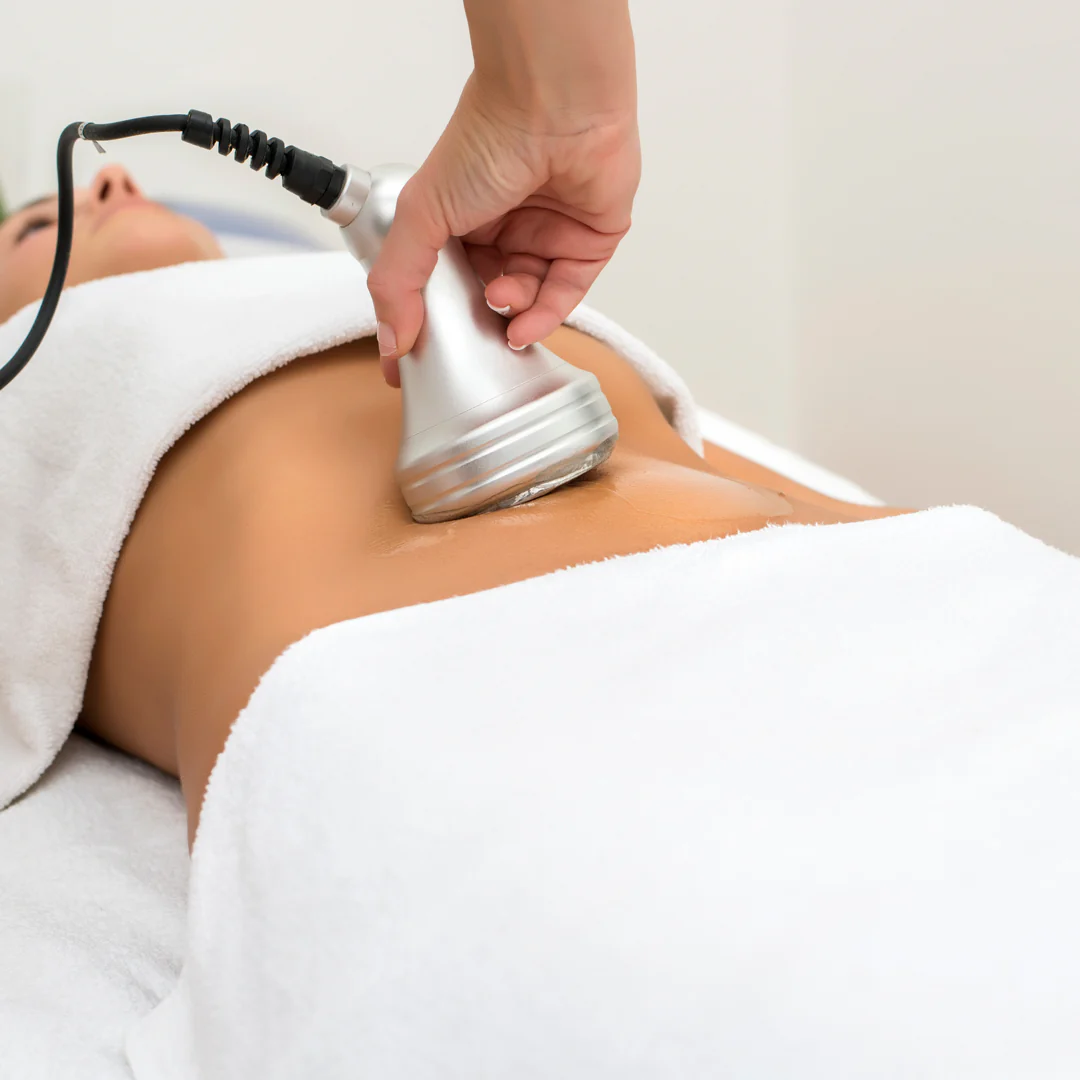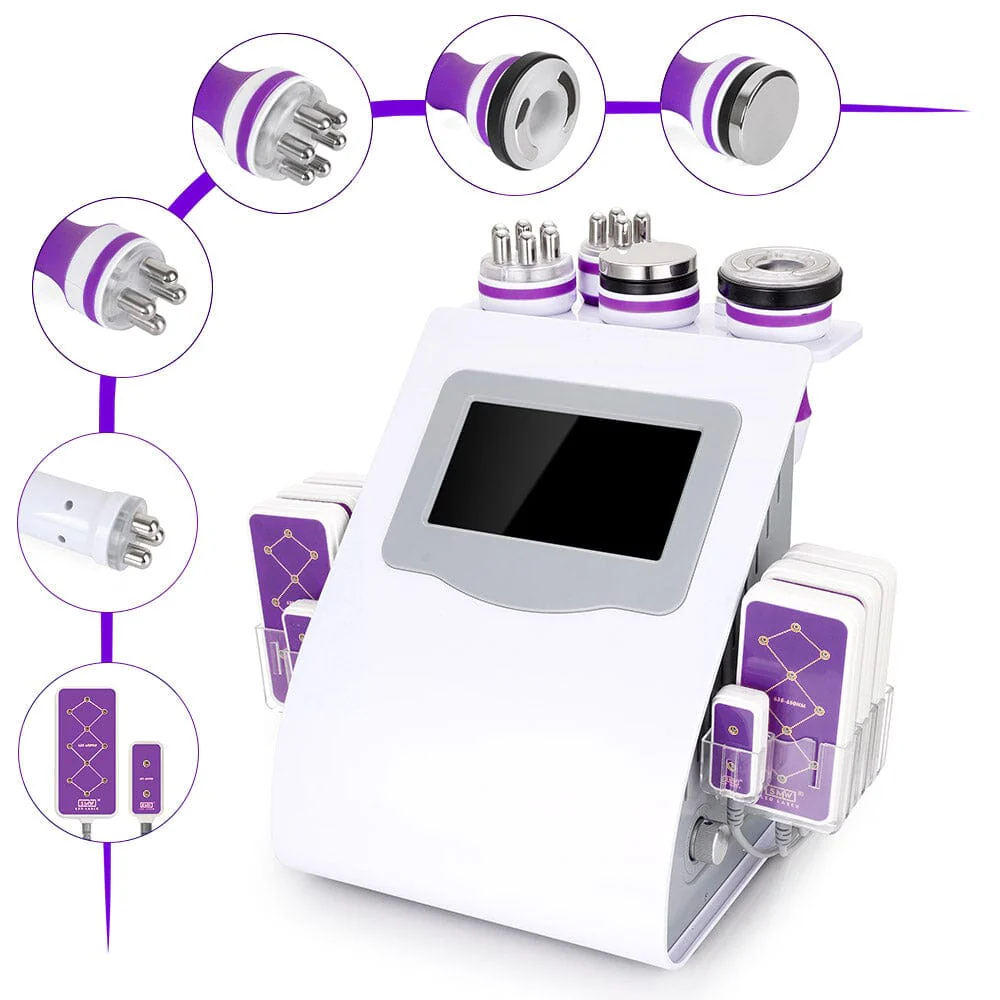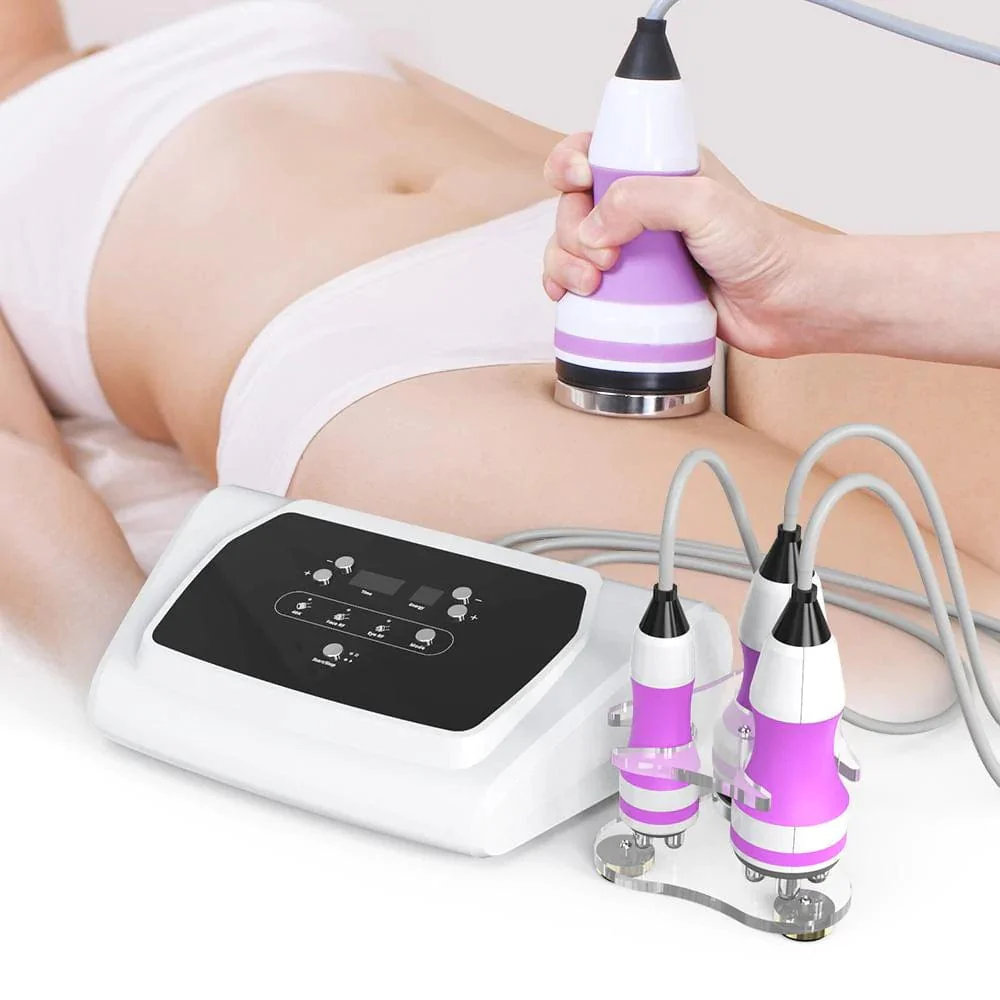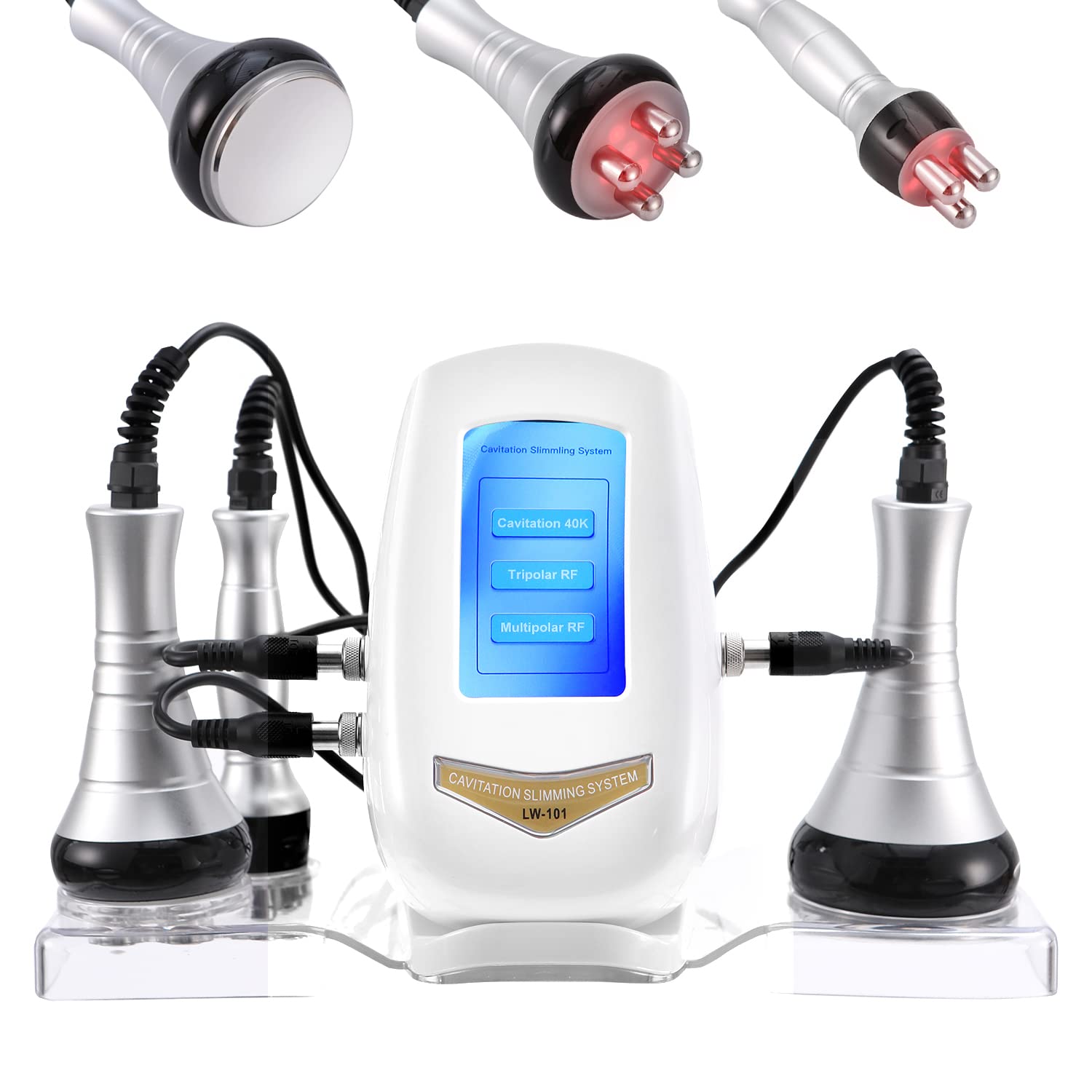
Unveiling the Power of Cavitation Machine
Understanding Cavitation Technology
Cavitation machine have emerged as a popular non-invasive body contouring solution in recent years. These devices utilize ultrasound technology to target and break down fat cells beneath the skin’s surface. The process, known as ultrasonic cavitation, creates tiny bubbles within the fat tissues. These bubbles then implode, causing the fat cells to rupture and release their contents. The body’s lymphatic system naturally eliminates the released fat over time. Cavitation machines typically operate at frequencies between 40-50 kHz, which is specifically effective for targeting adipose tissue.
This technology offers a painless alternative to traditional liposuction, attracting those seeking body sculpting without surgery. Moreover, cavitation treatments require no downtime, allowing individuals to resume their daily activities immediately after a session. As the demand for non-invasive cosmetic procedures continues to grow, cavitation machines have gained significant attention in both professional aesthetics clinics and home-use markets. Understanding the science behind cavitation technology helps users appreciate its potential benefits and limitations in body contouring.

Benefits of Cavitation Treatments
Cavitation treatments offer numerous benefits, making them an attractive option for body contouring enthusiasts. Firstly, these treatments provide a non-invasive alternative to surgical fat removal procedures, reducing risks associated with anesthesia and incisions. Patients experience minimal discomfort during the procedure, often describing it as a warm sensation or light vibration. Additionally, cavitation treatments target specific areas of the body, allowing for precise fat reduction in problem areas such as the abdomen, thighs, and love handles.
The results of cavitation treatments appear gradually, producing a natural-looking outcome without sudden, drastic changes. This gradual process also allows the skin to adapt, reducing the risk of sagging that can occur with rapid fat loss. Furthermore, cavitation treatments can improve skin texture and reduce the appearance of cellulite in treated areas. Many users report increased self-confidence and improved body image following a series of cavitation sessions. Unlike more invasive procedures, cavitation treatments do not require significant recovery time, allowing individuals to maintain their regular routines. Lastly, when combined with a healthy lifestyle, the results of cavitation treatments can be long-lasting, providing a sustainable approach to body sculpting.
How Cavitation Machines Work
Cavitation machine operate on the principle of ultrasonic waves to target and break down fat cells. The device emits high-frequency sound waves that penetrate the skin and create pressure variations in the underlying tissues. These pressure changes cause the formation of microscopic bubbles within the fat cells. As the bubbles rapidly expand and contract, they eventually implode, disrupting the fat cell membranes. This process, known as cavitation, releases the fat contents into the interstitial fluid surrounding the cells. From there, the body’s lymphatic system naturally processes and eliminates the released fat over time.
Cavitation machine typically feature a handheld applicator that the operator moves over the treatment area in a circular motion. This movement ensures even distribution of the ultrasonic waves for consistent fat reduction. Many modern cavitation machines also incorporate additional technologies such as radiofrequency or LED light therapy to enhance skin tightening and cellulite reduction. The ultrasonic waves used in cavitation treatments specifically target fat cells while leaving surrounding tissues unharmed. This selectivity makes cavitation a safe and effective method for localized fat reduction. Understanding the mechanics behind cavitation machines helps users appreciate the importance of proper technique and treatment protocols for optimal results.

Choosing the Right Cavitation Machine
Selecting the appropriate cavitation machine requires careful consideration of several factors. Firstly, potential buyers should evaluate the machine’s power output and frequency range. Higher power outputs generally allow for more effective fat reduction, while specific frequencies target different depths of fat tissue. Additionally, consider the size and design of the applicator head. Larger applicators can cover more area quickly, while smaller ones offer precision for detailed work. Many high-quality cavitation machine feature multiple applicator sizes for versatility. Safety features, such as automatic shut-off mechanisms and temperature control, are crucial for preventing overheating and ensuring user safety.
Look for machines with adjustable intensity settings to customize treatments for different body areas and individual comfort levels. Some advanced cavitation machines incorporate multiple technologies, such as radiofrequency or LED therapy, offering comprehensive body contouring solutions. For professional use, consider machines with user-friendly interfaces and preset programs for various treatment protocols. Durability and build quality are essential factors, especially for machines intended for frequent use in a clinical setting. Lastly, evaluate the manufacturer’s reputation, warranty offerings, and availability of customer support when choosing a cavitation machine. By carefully considering these factors, users can select a cavitation machine that best suits their needs and goals.
Preparing for a Cavitation Treatment
Proper preparation is key to maximizing the effectiveness of cavitation treatments. Begin by consulting with a qualified professional to determine if cavitation is suitable for your body contouring goals. Prior to the treatment, maintain proper hydration by drinking plenty of water in the days leading up to the session. This hydration supports the body’s natural processes for eliminating broken-down fat cells. Avoid consuming alcohol or caffeine for at least 24 hours before the treatment, as these substances can interfere with the body’s metabolic processes. On the day of the treatment, eat a light meal rich in protein and avoid fatty foods.
Wear comfortable, loose-fitting clothing to the appointment, as the treatment area will need to be easily accessible. Remove any jewelry or metal objects from the treatment area, as these can interfere with the ultrasonic waves. If possible, engage in light exercise before the treatment to stimulate blood flow and lymphatic drainage. Inform the practitioner of any medical conditions, medications, or recent surgeries that might affect the treatment. Some providers may recommend specific supplements or lymphatic drainage techniques to enhance results. By following these preparation guidelines, individuals can optimize their cavitation treatment experience and potentially improve outcomes.

The Cavitation Treatment Process
The cavitation treatment process typically begins with a consultation to assess the client’s goals and determine the appropriate treatment areas. The practitioner then cleanses the skin and applies a conductive gel to the treatment area. This gel helps transmit the ultrasonic waves effectively into the tissue. Next, the operator moves the cavitation machine’s applicator over the targeted area in slow, circular motions. The duration of treatment varies depending on the size of the area, but sessions generally last between 30 to 60 minutes.
Clients often report feeling a warm sensation or slight vibration during the procedure, but the treatment is generally painless. Some machines incorporate LED lights or radiofrequency energy, which may be applied simultaneously or sequentially with the ultrasonic waves. After completing the ultrasound portion, the practitioner may perform manual lymphatic drainage massage to help stimulate the elimination of disrupted fat cells. Following the treatment, the gel is removed, and the area is cleaned. Many providers recommend light exercise or movement after the session to further promote lymphatic drainage. The entire process is non-invasive, allowing clients to return to their normal activities immediately after treatment. Multiple sessions, typically spaced a week apart, are usually recommended for optimal results.
Post-Treatment Care and Expectations
Proper post-treatment care plays a crucial role in maximizing the benefits of cavitation treatments. Immediately after the session, clients should increase their water intake to help flush out the broken-down fat cells through the lymphatic system. Light exercise, such as brisk walking or cycling, is encouraged in the hours following treatment to stimulate circulation and enhance fat elimination. Avoid consuming alcohol or caffeine for at least 24 hours post-treatment, as these substances can interfere with the body’s natural detoxification processes. Maintaining a healthy diet rich in fruits, vegetables, and lean proteins supports the body’s metabolism and aids in processing the released fat.
Some practitioners recommend wearing compression garments in the treated areas to support lymphatic drainage and enhance results. Clients should avoid hot baths, saunas, or other activities that cause excessive sweating for 24 hours after the treatment. Results from cavitation treatments appear gradually, with most people noticing changes within a few weeks of starting their treatment series. Optimal results typically become visible after completing the recommended number of sessions, usually between 6 to 12 treatments. It’s important to maintain realistic expectations, as cavitation is most effective for spot reduction rather than overall weight loss. By following these post-treatment guidelines and maintaining a healthy lifestyle, clients can optimize their cavitation results and enjoy long-lasting body contouring effects.
Combining Cavitation with Other Treatments
Cavitation treatments often yield enhanced results when combined with complementary therapies. Many practitioners recommend pairing cavitation with radiofrequency treatments to address both fat reduction and skin tightening simultaneously. This combination can produce more comprehensive body contouring results, improving both body shape and skin texture. Another popular combination involves alternating cavitation sessions with lymphatic drainage massage. This approach helps stimulate the lymphatic system, potentially accelerating the elimination of disrupted fat cells. Some clinics offer packages that include cavitation alongside other non-invasive treatments like cryolipolysis or laser lipo for a multi-faceted approach to body sculpting.
Additionally, incorporating LED light therapy can help reduce inflammation and promote skin rejuvenation in treated areas. For clients concerned with cellulite, combining cavitation with treatments like endermologie or acoustic wave therapy may provide more pronounced improvements in skin texture. Some practitioners also recommend pairing cavitation treatments with specific dietary supplements or detoxification programs to support the body’s fat elimination processes. When considering combining treatments, it’s crucial to consult with a qualified professional to develop a personalized treatment plan that addresses individual goals and concerns. By strategically combining cavitation with other therapies, clients can potentially achieve more comprehensive and satisfying body contouring results.

Safety Considerations and Potential Side Effects
While cavitation treatments are generally considered safe, it’s essential to be aware of potential risks and side effects. Most commonly, clients may experience temporary redness, swelling, or bruising in the treated area. These effects typically subside within a few hours to days after treatment. Some individuals report feeling thirsty or experiencing mild headaches following cavitation sessions, which can usually be alleviated by increasing water intake. In rare cases, clients may experience temporary numbness or sensitivity in the treated area. It’s crucial to choose a qualified and experienced practitioner to minimize the risk of more serious complications.
Cavitation treatments are not recommended for individuals with certain medical conditions, including heart problems, liver or kidney disease, or active infections. Pregnant or breastfeeding women should also avoid cavitation treatments. People with metal implants or pacemakers in the treatment area should not undergo cavitation therapy, as the ultrasonic waves can interfere with these devices. It’s important to disclose any medical conditions or medications to the practitioner before beginning treatment. While serious side effects are rare, they can include burns or skin damage if the machine is used improperly. By following proper protocols and adhering to safety guidelines, practitioners can ensure that cavitation treatments remain a safe and effective option for body contouring.
The Future of Cavitation Technology
As the demand for non-invasive body contouring solutions continues to grow, the future of cavitation technology looks promising. Researchers and manufacturers are constantly working to improve the efficiency and effectiveness of cavitation machines. One area of focus is the development of more precise targeting mechanisms, allowing for even more localized fat reduction. Advancements in ultrasound technology may lead to machines that can treat deeper layers of fat tissue, potentially expanding the applications of cavitation treatments. Integration with artificial intelligence and machine learning could result in more personalized treatment protocols, optimizing results for individual body types and fat distributions.
Some companies are exploring the combination of cavitation with other emerging technologies, such as shockwave therapy or electromagnetic energy, for enhanced body sculpting effects. The trend towards at-home beauty devices may also influence the cavitation market, with the potential development of safer, user-friendly cavitation machines for personal use. As our understanding of fat metabolism and body contouring improves, future cavitation treatments may incorporate targeted supplements or topical products to enhance fat elimination and skin tightening effects. With ongoing research and technological advancements, cavitation machines are likely to become even more efficient, versatile, and accessible in the coming years, solidifying their place in the non-invasive body contouring landscape.

